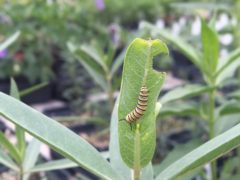
showy milkweed
Asclepias speciosa
Showy milkweed produces dusty pink flower clusters in mid-summer atop large, glossy leaves that resemble … Continued
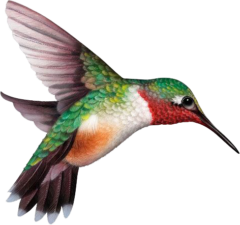 Hummingbirds, bees and butterflies are well-known pollinators, but there are thousands of unsung pollinator heroes, including moths, wasps, flies, and beetles, many mammals, birds, and reptiles, who also take on the job.
Hummingbirds, bees and butterflies are well-known pollinators, but there are thousands of unsung pollinator heroes, including moths, wasps, flies, and beetles, many mammals, birds, and reptiles, who also take on the job.
Pollinators move from plant to plant, fueling up with pollen and nectar from blooming trees, shrubs, perennials, annuals, vegetable plants, and herbs. As they move, the pollinators transport and deposit pollen, fertilizing plants and allowing them to reproduce.
Pollinator plants can be native and non-native, but not all flowering plants are equal when it comes to providing the highest quality protein-rich pollen. Many hybrids don’t even produce pollen at all. The following list includes pollen-rich plants to include in your garden to provide pollinators with food.
Local butterfly expert Lenora Larson has created these informational handouts. You can download them here!
• Butterflies: Flying Flowers in your Garden!
• A Vital Connection: Native Plants and Butterflies
• Long Lips Farm Caterpillar Foodplants
• Butterfly Bartending: Nectar Flowers
• Long Lips Farm: Selected Butterfly Nectar Flowers
• Bee Friendly: Plants for Bees and Other Pollinators
Since 1970 the population of North American birds has dropped nearly 30% — almost three billion birds have vanished from our forests, grasslands, and backyards in less than a human lifetime. It’s a chilling fact that makes it clear that we must act as individuals to help ensure their survival.
Most importantly, ninety-six percent of all terrestrial bird species rear their young on insects so it is also important to grow plants that feed insects to provide a well-rounded habitat in your garden.
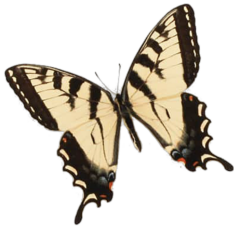

Asclepias speciosa
Showy milkweed produces dusty pink flower clusters in mid-summer atop large, glossy leaves that resemble … Continued
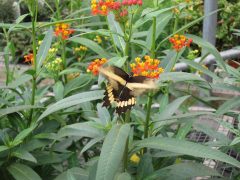
Asclepias curassavica
‘Silky Deep Red’ blooms scarlet red and yellow two-tone. ‘Silky Gold’ sports yellow blooms. Both … Continued
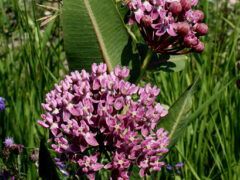
Asclepias sullivantii
Easily grown in average, medium to wet soils in full sun, plants may self-seed in … Continued
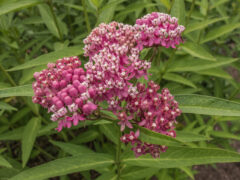
Asclepias incarnata
Swamp milkweed sports lightly fragrant flower clusters from early summer through fall. Plants grow 3-5′ … Continued
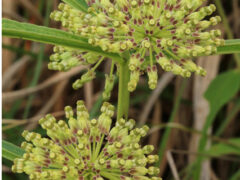
Asclepias hirtella
Plants grow up to 4′ and produce white flowers. This species prefers medium-wet to dry … Continued
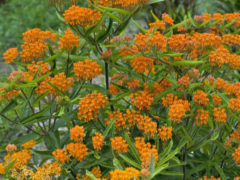
Asclepias tuberosa
Perennial Plant Association 2017 Perennial Plant of the Year! Asclepias tuberosa (butterfly weed) features showy … Continued
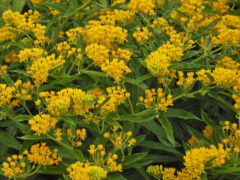
Asclepias tuberosa 'Hello Yellow'
A long-lived, low-maintenance perennial, this yellow flowering selection of our native A. tuberosa was discovered … Continued
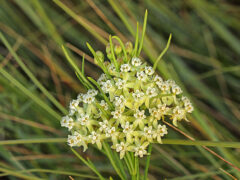
Asclepias verticillata
Whorled milkweed blooms later than other milkweeds with white flowers July thru September. The caterpillars … Continued
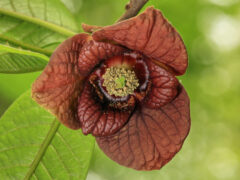
Asimina triloba
This native understory tree or large shrub grows 15-20’ tall (sometimes to 30’) and occurs … Continued
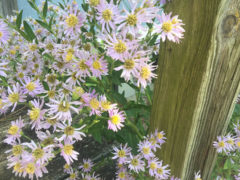
Aster tataricus
Easily grown in average, medium, well-drained soils in full to part sun. Can be divided … Continued
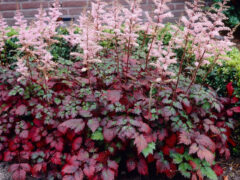
Astilbe arendsii ‘Color Flash’
A kaleidoscope of color from through fall! Foliage emerges with a mix of green, variegated … Continued
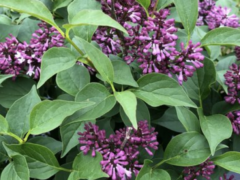
Syringa hybrid
The smallest lilac, this Proven Winners plant packs a lot of flower power. Glossy, dark … Continued